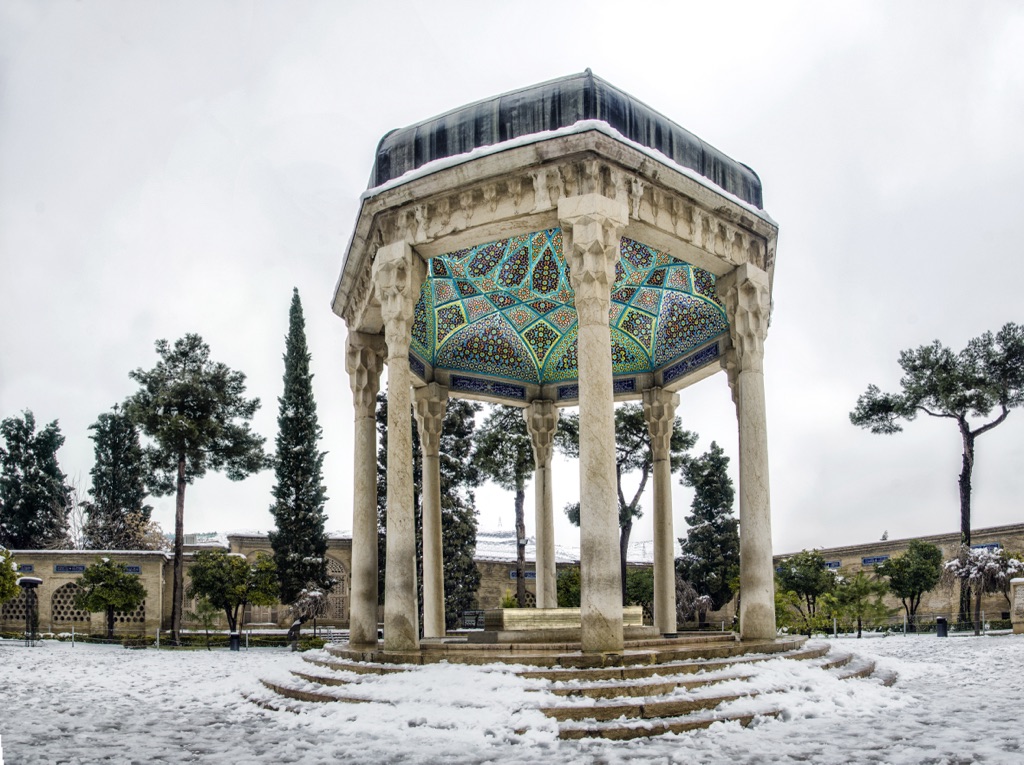The Tomb of Hafez, located in Shiraz, Iran, is a revered site dedicated to the celebrated Persian poet Hafez. Also known as Hafezieh, the mausoleum honors Hafez, who was known for his eloquent and profound poetry, particularly the “Divan,” a collection of his works. The site has become a place of pilgrimage for lovers of poetry and Persian culture, attracting visitors from around the world. The tomb itself is set within a picturesque garden, reflecting the poetic spirit of Hafez’s work, which often celebrated the beauty of nature.
Get your dose of History via Email
Historical Background of the Tomb of Hafez
The Tomb of Hafez was built in the memory of the Persian poet Hafez, who lived from 1315 to 1390. The current mausoleum dates back to 1773 and was constructed during the Zand dynasty. It was designed by the French architect and archaeologist, André Godard. The site has undergone several renovations throughout history, reflecting the changing tastes and influences of subsequent rulers.
Originally, Hafez was laid to rest in the graveyard of Musalla Gardens. His tomb was first memorialized with a simple dome structure in the 15th century by Babur Ibn-Baysunkur. The site later became a focal point for admirers of Hafez’s poetry, who would gather to recite his verses.
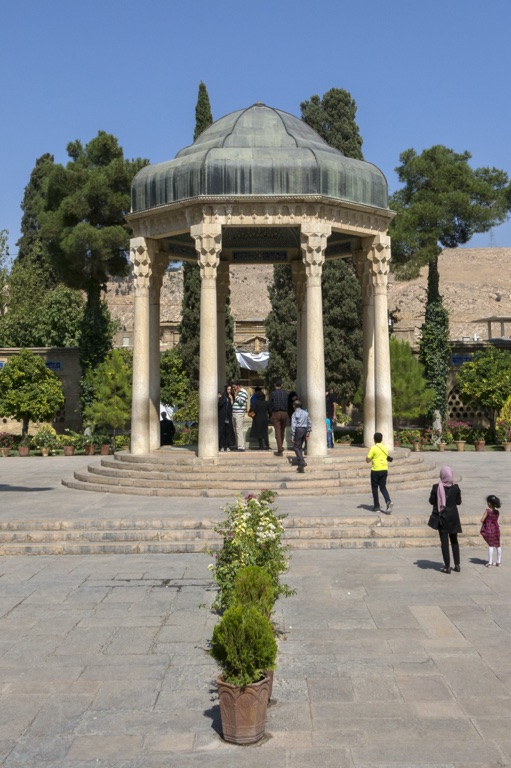
In the 18th century, Karim Khan Zand, a ruler of the Zand dynasty, commissioned a more substantial memorial. He recognized the cultural significance of Hafez and sought to honor him appropriately. The resulting structure was an open pavilion with a copper dome, surrounded by lush gardens.
Over the years, the tomb has been a sanctuary for those seeking inspiration or solace in the words of Hafez. It has also been a site of cultural importance, reflecting the deep respect for literature and poetry in Persian culture. The tomb has withstood the test of time, enduring through periods of political upheaval and social change.
The Tomb of Hafez has not only been a resting place for the poet but also a site of historical events. It has seen gatherings of intellectuals during times of political change and has been a symbol of Iranian cultural identity, especially during the 20th century when Iran underwent significant modernization.
About the Tomb of Hafez
The Tomb of Hafez is an architectural masterpiece, combining elements of Persian and Islamic design. The mausoleum features a marble tombstone, upon which verses of Hafez’s poetry are inscribed. The structure is crowned with a dome that resembles the shape of a dervish’s hat, symbolizing Hafez’s Sufi beliefs.
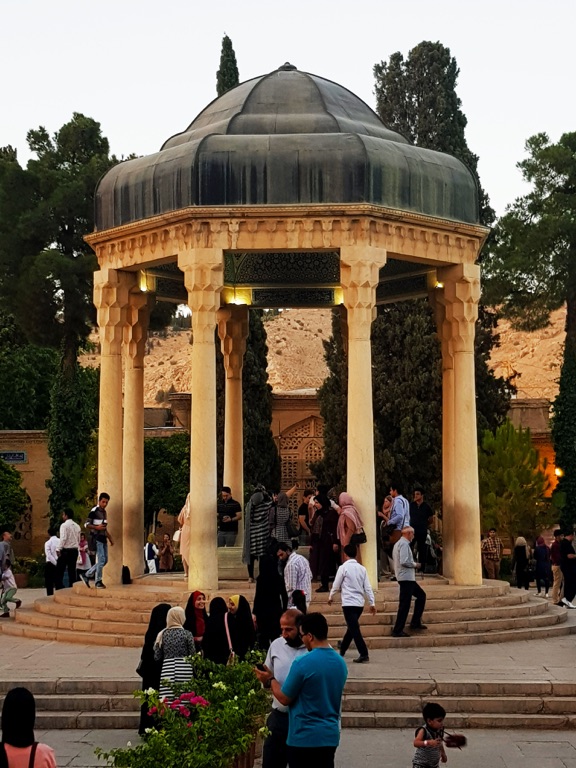
The surrounding gardens, known as the Musalla Gardens, are a key feature of the site. They are designed in the traditional Persian style, with water channels and paths creating a serene environment. The gardens are home to various plant species, including roses and cypress trees, which are significant in Persian poetry and art.
The pavilion that houses the tomb is supported by eight columns, and the ceiling is adorned with intricate mosaic tiles. The use of natural light and the reflection of water from the surrounding pool create a tranquil atmosphere, inviting contemplation and reflection.
The materials used in the construction of the tomb include marble for the tombstone, and tiles for the mosaic work. The craftsmanship reflects the high level of skill and artistry that is characteristic of Persian architecture.
Visitors to the Tomb of Hafez can also find an onsite teahouse, a library, and a small museum dedicated to the poet’s life and works. These facilities provide a deeper understanding of Hafez’s influence on Persian literature and culture.
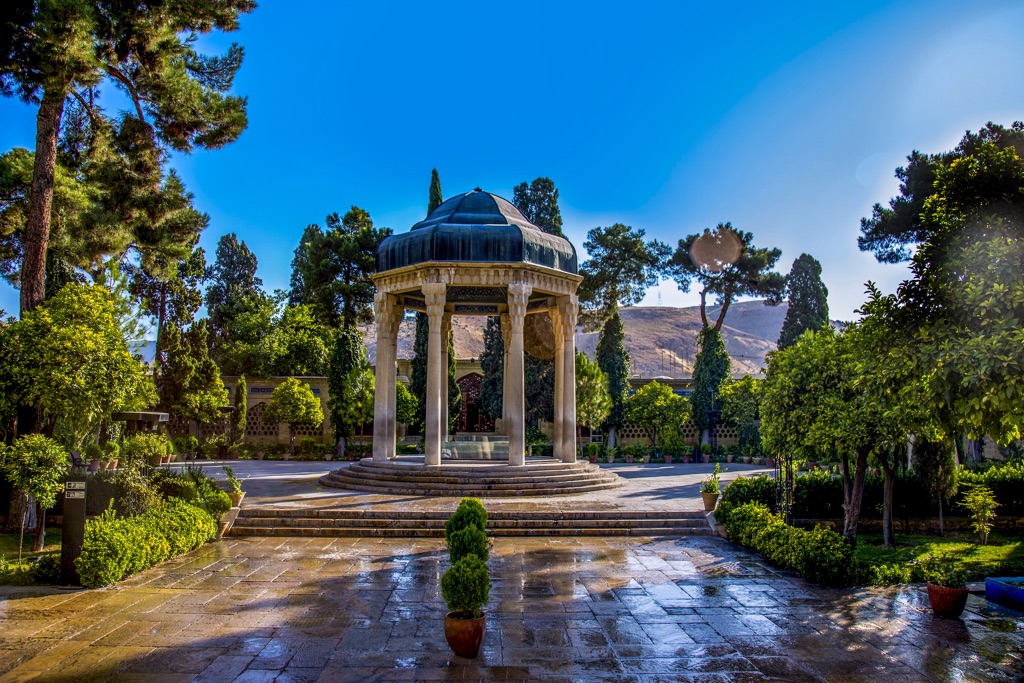
Theories and Interpretations
The Tomb of Hafez has been the subject of various interpretations and theories over the years. Some scholars believe that the site’s design reflects the mystical aspects of Hafez’s poetry, with the garden symbolizing paradise and the water channels representing the flow of life.
There are also theories about the significance of the number of steps leading to the tomb, which some say correspond to the number of verses in Hafez’s poetry. However, these interpretations are speculative and not universally accepted.
The mysteries surrounding Hafez’s life and the exact meaning of his poems have also contributed to the aura of the tomb. His work often contains layers of meaning, with esoteric and philosophical undertones that have been analyzed by scholars for centuries.
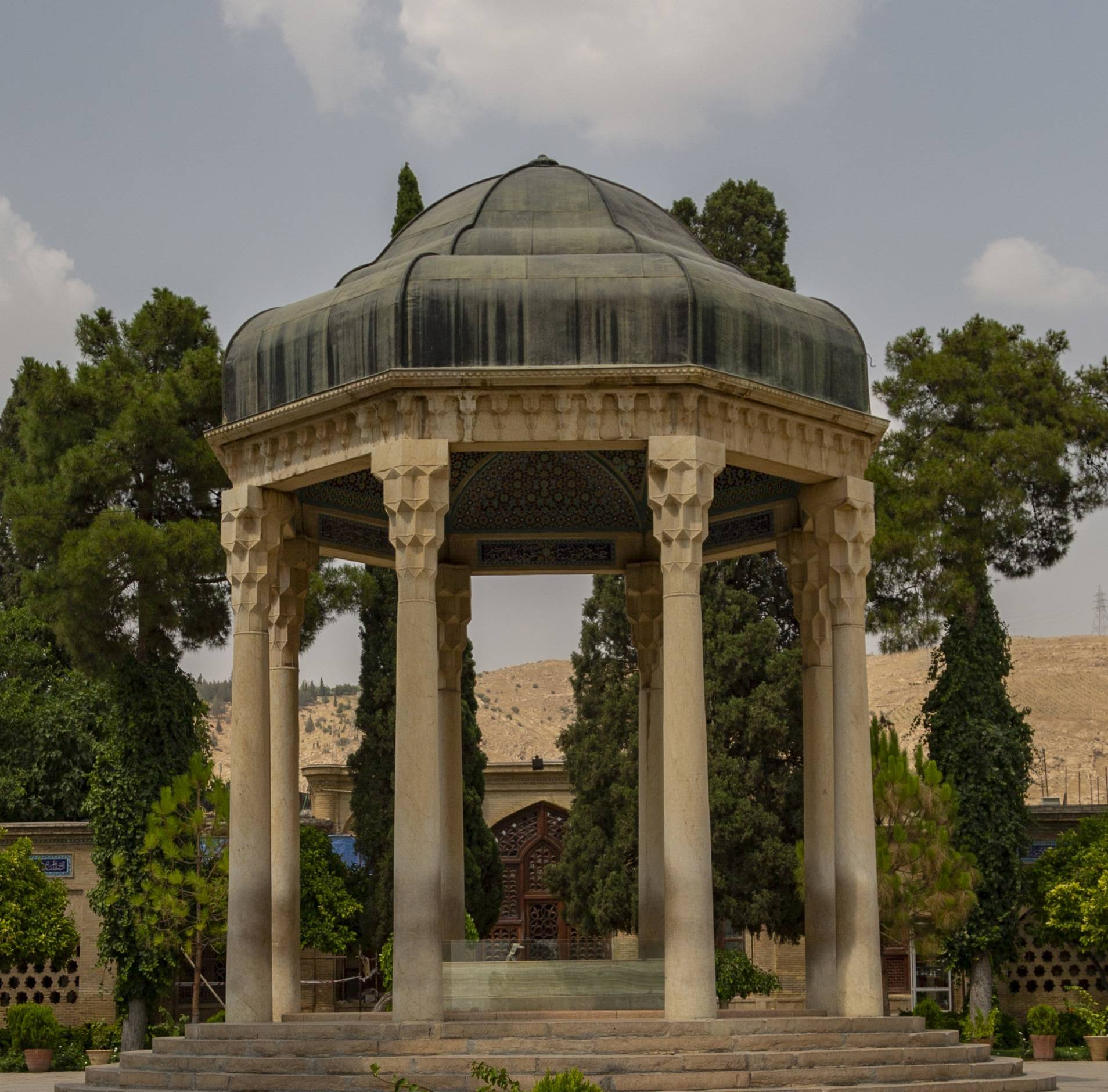
Dating of the site has been carried out using historical records, as there are no physical remains from the original 14th-century structure. The current structure’s date is well-documented, thanks to the historical accounts of the Zand dynasty’s patronage.
The tomb’s significance as a cultural and literary site has led to various interpretations of its role in Persian society. It is seen not only as a memorial to a great poet but also as a symbol of the enduring nature of Persian artistic achievement.
At a glance
Country: Iran
Civilization: Persian
Age: The current structure dates back to 1773 AD
Conclusion and Sources
The Tomb of Hafez stands as a testament to the enduring legacy of one of Persia’s most beloved poets. Its historical significance and architectural beauty continue to draw visitors and scholars alike. The information provided in this article is based on reputable sources, ensuring an accurate representation of this cultural landmark.
Reputable sources used in this article include:

